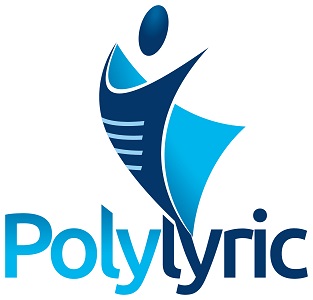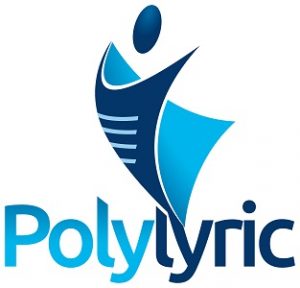Like so many facets of life in the digital age, the world of book publishing is simultaneously shrinking and expanding. As the traditional publishing routes have consolidated and become increasingly selective, authors are turning in droves to more direct means for getting their books before readers. Although the terms “self publishing,” and “independent publishing” are often used loosely and interchangeably, there are important distinctions between the two. The days of belittling non-traditional publishing as nothing but “vanity” are drawing to a close. The independent publishing movement, and it is a movement, may herald a true paradigm change in the relationship between writers and their audiences.
This will be the first in a series of posts about the exciting state of flux in the publishing world. Comments and guest submissions are invited and appreciated. Please chime in.
Traditional Publishing
Traditionally, if an author wished to see his or her book in the hands of readers, it was necessary to submit it through an agent to one of the big publishing houses (such as Hatchette Group, HarperCollins, MacMillan Publishers, Penguin Random House, Simon and Schuster, or one of their imprints). If fortune smiled, an author might secure an option contract, under which the publisher held an exclusive right to decide whether to publish. If the author were even luckier, the publisher would decide to publish the book. The publisher would then control the title, cover, and content of the book. If initial marketing did not send the book viral, then the author would be responsible for marketing and, in exchange for his or her labors, sacrifice of control, and ongoing promotional efforts, would receive the prestige of the publisher’s label, and maybe a 10 percent cut of list price on the book (or about $1.80 on an $18.00 paperback.) The author might barely recognize the book attributed to her, and after the agent’s cut, would have little to show in the way of earnings. Although the author might receive an advance on royalties, it would have to be paid back through the royalties as they came in, which might never exceed the advance.
The trend in traditional publishing is to consolidate and tighten. The current Big Five used to be the Big Six before the consolidation of Penguin and Random House in 2013, and further mergers are expected. So, at a time when communication via the Internet is constantly expanding, the gateways to traditional publishing are getting smaller.
Self Publishing
Unlike in the past when traditional publishing houses held a virtual monopoly on access to readers, authors now have many ways available to publish books on their own. The path of least resistance is to upload a manuscript and put together a cover through companies like CreateSpace, Ingram Spark, Book Baby or Lulu, and sell it through Amazon as an eBook or in print form through print on demand (POD) services. It is also theoretically possible to get POD books into bookstores through the distribution networks available through CreateSpace or Ingram Spark, but not if an author wants to make a living by writing. Once the distributor takes its cut, POD is too expensive for anything to be left for the author when the book is sold. These companies also usually provide ISBNs for titles published through them, which means that the company is the publisher of record, although there are options in some POD companies for an author to provide an ISBN. (ISBNs will be explored in another post).
There are also many so called “vanity presses” out there that authors can pay to produce a book. They present themselves as publishers but are not publishing houses in the true sense. They do not take on an author’s manuscript, steer and fund its production, market it, and share profits with the author. They provide a paid book production service. Manuscripts are not accepted for “publication” due to their merit, but based on the author’s ability to pay for all aspects of production and marketing. This option may be fine for someone that just wants to see their book in print and sell or give it to a select audience, and perhaps it is useful as a way for an author to get a first book out, but it is not a suitable platform for a career as a writer.
Independent Publishing
In contrast to self publishing, independent publishing involves the creation of a publishing company or small press that provides services similar to traditional publishers, but in new and different ways. An independent publisher will develop relationships with editors, cover designers, content formatters, printers, distributors, vendors, and marketing channels, will fund and steer production of the book, and will spearhead marketing, distribution and sales. Independent publishers have the freedom to structure their publishing contracts in innovative ways, with the possibility of a much more collaborative relationship with authors. Many independent publishing houses start out as a vehicle for publishing a single title, but then grow as businesses in their own right and provide a platform for the publication of other authors’ works.
Although an independent publisher can produce books and access distribution networks through the same POD services available to individual authors, POD is not profitable for distribution into brick and mortar bookstores. For a print version of a book to be profitable, it is necessary to take the risk of investing in an offset print run, where many books are printed in advance in a big run and warehoused for distribution. It is very difficult for an individual author to make such an investment and take the risk of ending up with piles of unsold or returned books. An independent publishing company can make this possible.
Independent publishers are free to structure royalty arrangements in any way they and authors doing business with them see fit. This can mean that an author ends up with a much larger percentage of sale proceeds.
Limits or Frontiers?
So, what determines how big a pie the publisher and author can slice up? Several important variables affect this. The cost of printing is one hard factor. Another is the cost of distribution and order fulfillment. And, this may be where the publishing paradigm is about go through a fundamental shift.
As things stand now, in order to get books into bookstores, self publishers and independent publishers must go through existing distribution networks, so that their titles are made available to wholesalers and show up in the catalogs that booksellers consult to place orders. There are various ways to accomplish this (i.e. through Ingram, Baker and Taylor, or various distribution companies that access their networks) but they cost a significant percentage of sales, which limits a progressive publisher’s leeway. The gospel is that there is no other way. Is there a path beyond this practice? Circumnavigating conventional distribution would be revolutionary, but much in our world is in transition, and perhaps this sacrosanct assumption is in need of revision.
Please stay tuned, and share your thoughts.



Wow so much goes into writing a book let alone getting it out there. Kudos to you for taking on all aspects of the art.
A very clear description of the problems facing authors at the moment. Perhaps by having this conversation there will be a breakthrough that will provide authors with a reasonable return on their hard work as well as better promotional opportunities.
I had no idea of the complexities of being an author and getting a book published. Daunting – though modern options seem better than those available in the past. Good work Eric…I just ordered your book from Amazon today. You made it happen!
Thank you for your intelligent overview of publishing today. For years I tried to get an agent. I secured one briefly but he wanted a quick sale to one of the Big Five and when it didn’t happen, we parted ways. Self-publishing opened the door for me; hard work eventually led to the thrill of seeing my book in print. My dream came true. A copy of my second novel is in my college library, another thrill. Making a living by writing may still elude me but even so, I am an author.
Since you are putting labels on Independent Publishers etc. I would like to know what you would call a Designer that specializes in Book Design that deals with editorial for the manuscript, design, formatting, photography & Illustration (if needed) proofreading, final artwork, and searching for appropriate printers or POD for the job. I work with mostly printed books but I can outsource the production of an e-book.
From your definition, I don’t think I fit with the Independent Publishers or the Self Publishers. So what am I???